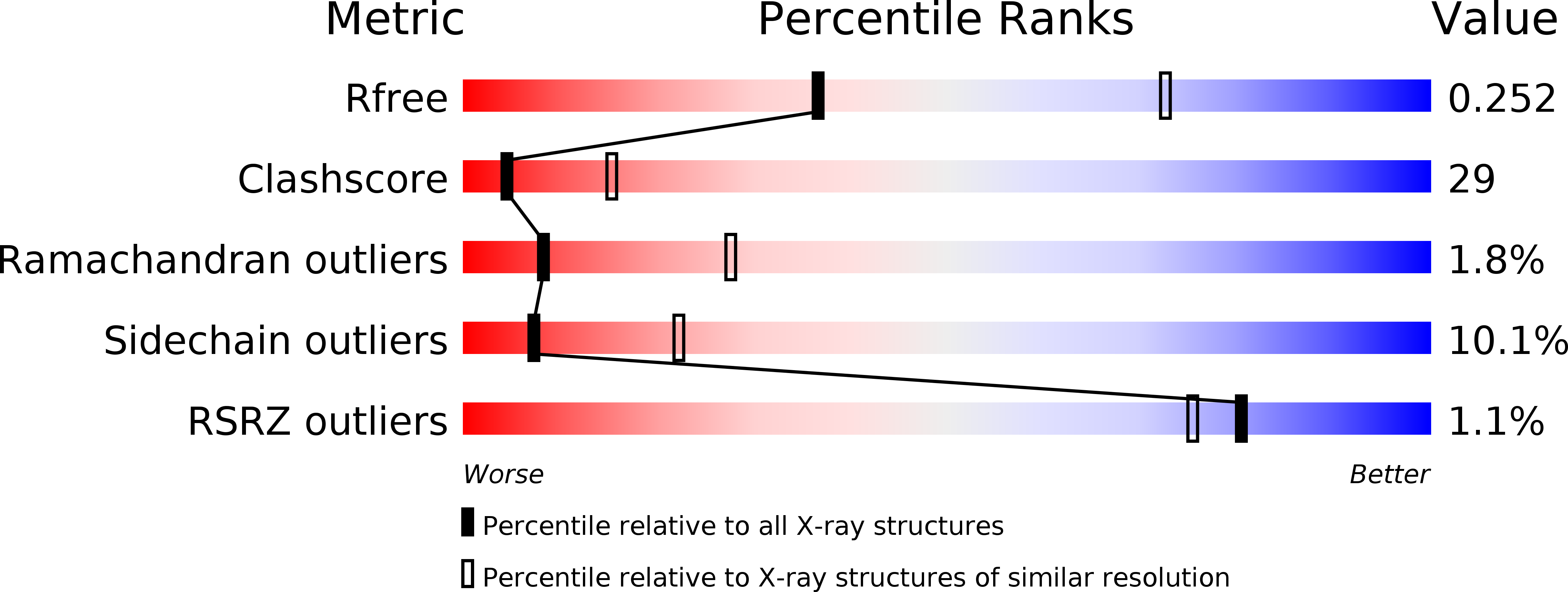
Deposition Date
2004-10-15
Release Date
2004-11-09
Last Version Date
2025-03-26
Entry Detail
PDB ID:
1XRS
Keywords:
Title:
Crystal structure of Lysine 5,6-Aminomutase in complex with PLP, cobalamin, and 5'-deoxyadenosine
Biological Source:
Source Organism:
Clostridium sticklandii (Taxon ID: 1511)
Host Organism:
Method Details:
Experimental Method:
Resolution:
2.80 Å
R-Value Free:
0.26
R-Value Work:
0.19
R-Value Observed:
0.19
Space Group:
P 31 2 1


